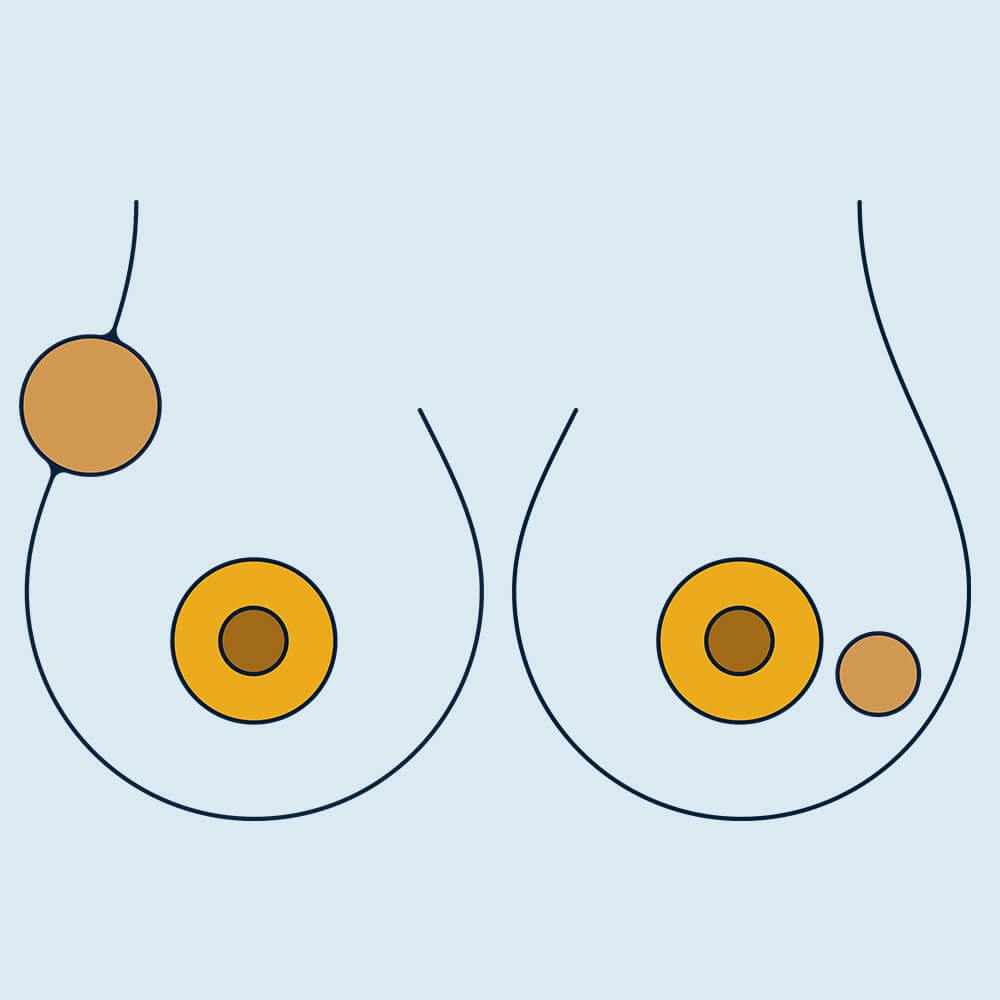Illustrated by Sabrina Bezerra
Breasts, boobies, tatas. Whatever you want to call them, anyone who has breast tissue (ie, everybody), should be aware of the signs and symptoms of breast cancer.
What are the risk factors of breast cancer?
Everyone, no matter their sex, is at risk of breast cancer, but cisgender women and AFAB individuals are at a much higher risk. In fact, being a woman is one of the main risk factors of breast cancer. 99% of breast cancer cases are in women.
Other risk factors include age (80% of breast cancers occur in women over 50, and most men who get breast cancer are over 60), and a family history of breast cancer.
What are the warning signs of breast cancer?
There is no single known cause of breast cancer, and many factors can affect your chances of developing it.
That makes preventing breast cancer a bit tricky, but knowing how to spot the signs and symptoms of breast cancer is one of the ways you can catch and treat it as early as possible.
Many people believe the only symptom breast cancer is a lump, and while breast lumps are definitely a common sign of breast cancer, it’s not the only thing you should look out for.
One in six cases of breast cancer starts with warning signs other than a lump, and yet, according to research by UCL, women were less likely to go to the doctor to have symptoms other than a lump checked out.
Breast changes: normal vs. abnormal
The way your boobs look and feel can change throughout your menstrual cycle – PMS boobs, anyone?
This is because breast tissue reacts to your body’s hormonal fluctuations, so it’s common for your breasts to feel tender, swollen, or lumpy at certain points of your cycle.
However, knowing what is normal for your body and cycle will help you spot when something isn’t quite right. If you see or feel an unusual change, you should get it checked out.
Here are eight symptoms of breast cancer to look out for:
1. Lumps and thickening
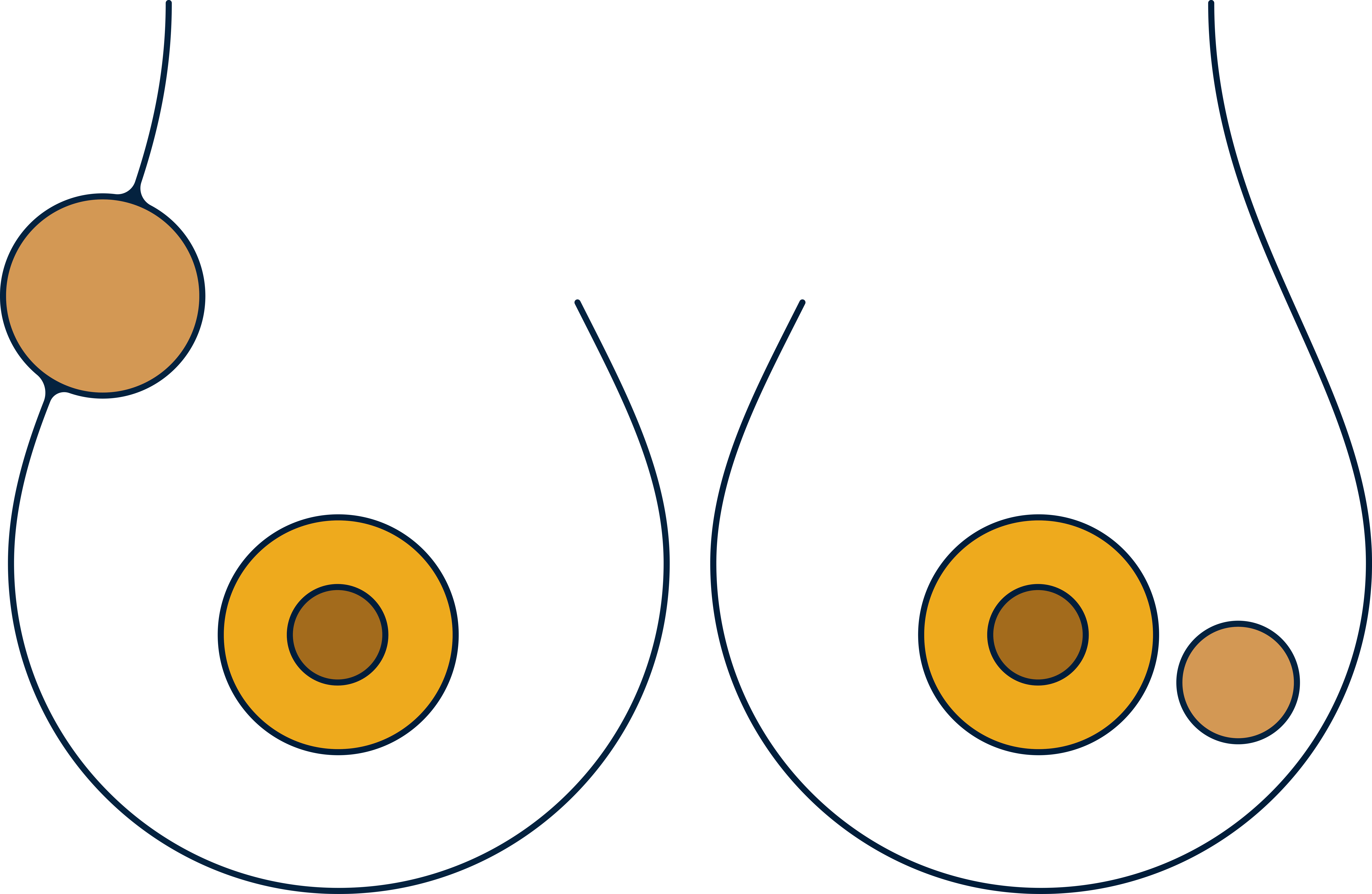
Let’s start with breast lumps, since there are many misconceptions about them.
Breasts are made up of fat, tissue, nerves and veins, so it’s perfectly normal for boobs to feel a little lumpy. The important thing is to get to know how your boobs feel, and what level of lumpiness is normal. If you notice any new lumps, or your breast starts to feel thicker in one specific area, you may want to get it checked out.
What does a breast cancer lump feel like?
Not all breast cancer lumps feel the same, but you should look out for any lump that is hard to the touch, has irregular edges, doesn't move down when pushed, and grows over time.
However, it’s important to know that breast cancer lumps don’t always fit this criteria, and they’re often painless.
What kind of lumps are normal in breasts?
Feeling a lump in your breast can be scary, but remember that most lumps are benign (not cancer). Breast lumps can also be cysts, fluid-filled lumps that form when fluid builds up inside the breast gland, or fibroadenomas, which are benign tumours made of gland and connective breast tissue.
Some people have very dense, fibrous breast tissue, so feeling for lumps or changes in your breasts texture may be more difficult. But that doesn’t mean you shouldn’t try!
2. Changes in skin texture

This is why you should be giving your breasts a good ol’ look every now and then. Changes in the way the skin on your breasts looks and feels isn’t always a cause of concern, but can sometimes be a sign of breast cancer. If you notice dimpling or puckering of the skin, where it starts to look like orange peel, speak to your GP or healthcare provider.
3. Swelling in your armpit or around your collarbone
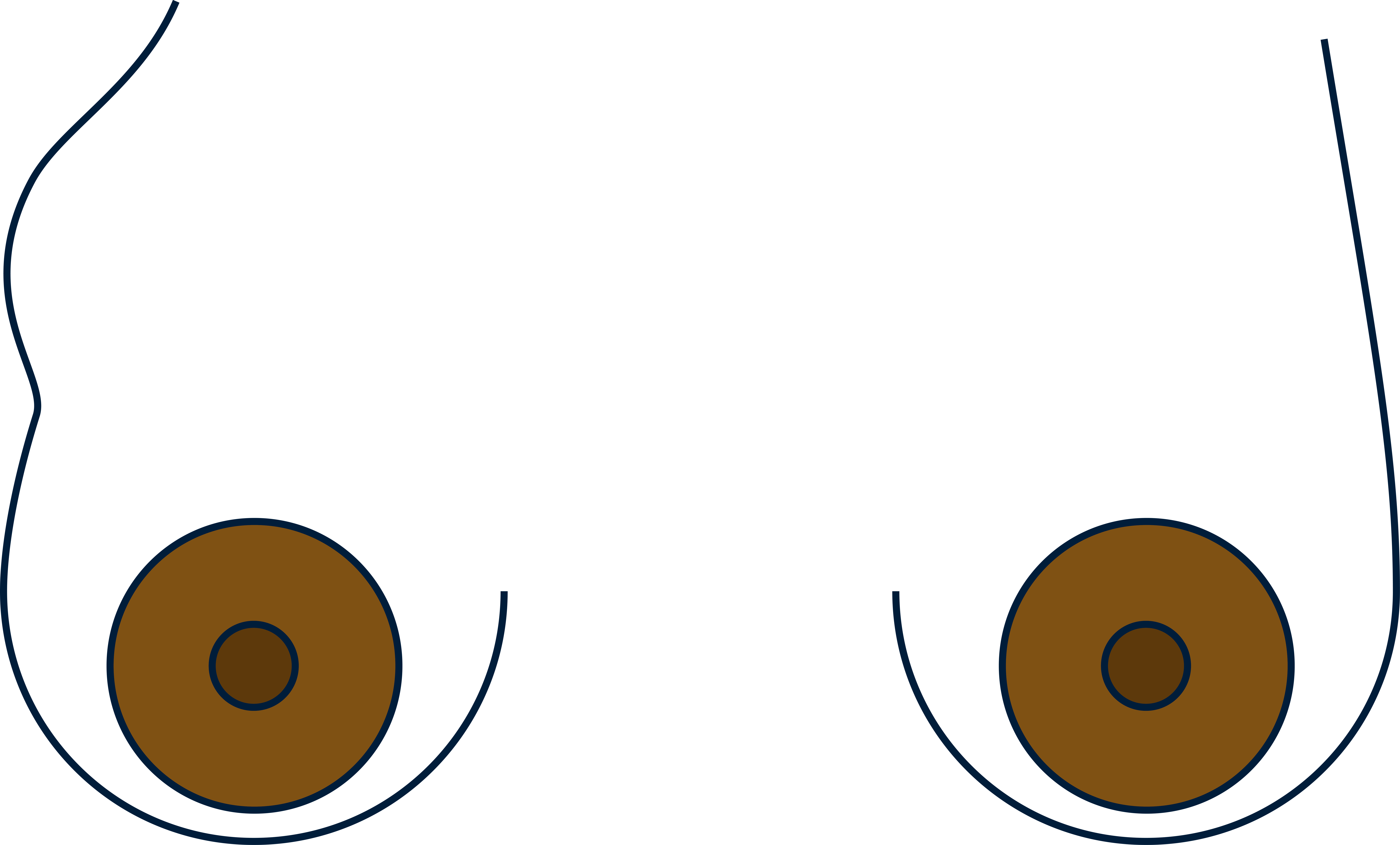
Your upper chest and armpit also contain breast tissue, so it’s important to check them as well – not just your actual boob.
4. Constant, unusual pain
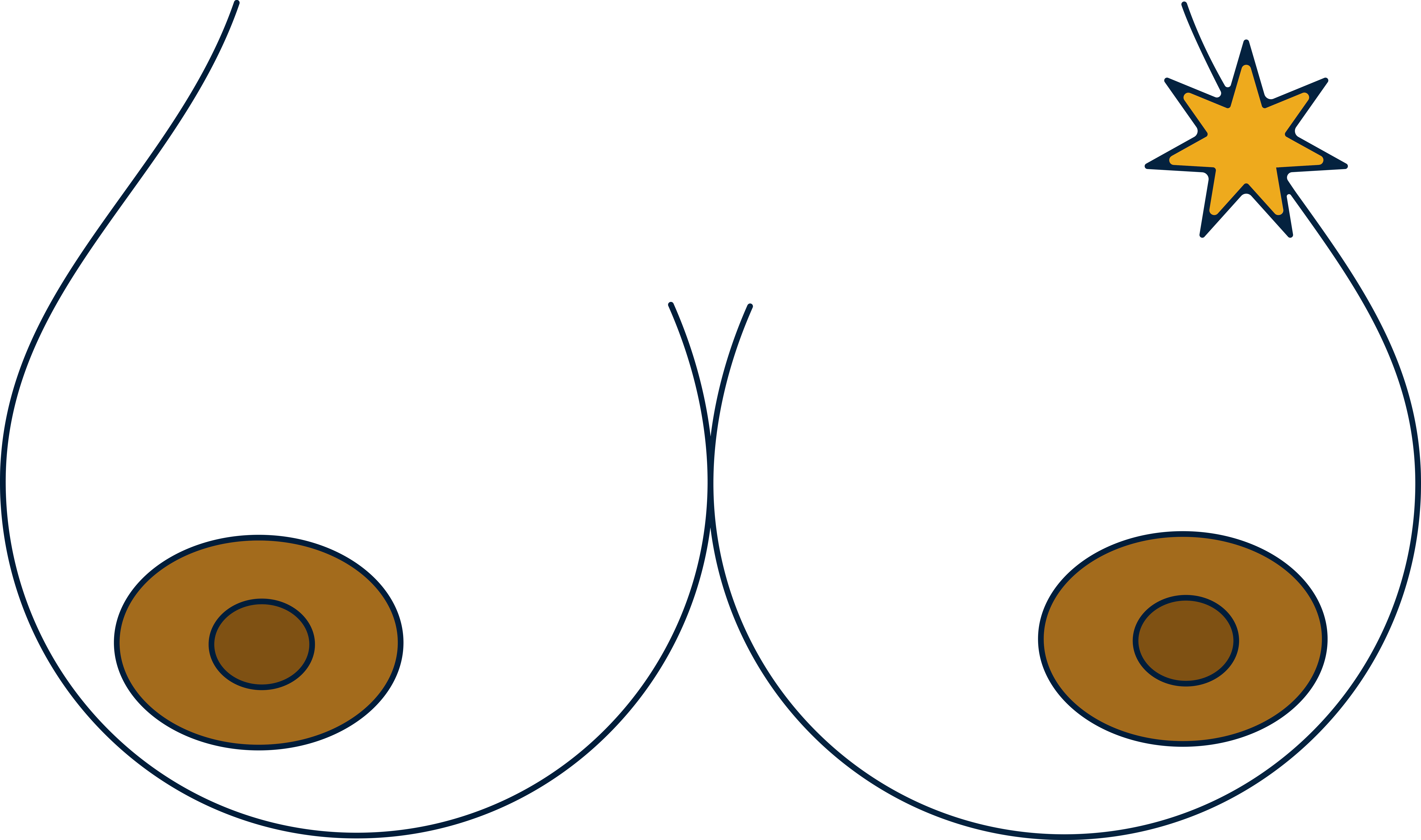
Breast pain can be perfectly normal. Painful or tender breasts are very common around your period, and some people who menstruate also begin to feel breast pain around the time of ovulation. That sort of pain can feel dull and constant, or it can feel like a random shooting pain. It’s also normal to feel some breast tenderness
It’s also common to experience muscle aches in your pecs if you went a little too hard during your upper body workout.
That being said, watch out for any sort of pain in your breast or armpit that is unexplained and doesn’t go away.
5. Nipple discharge
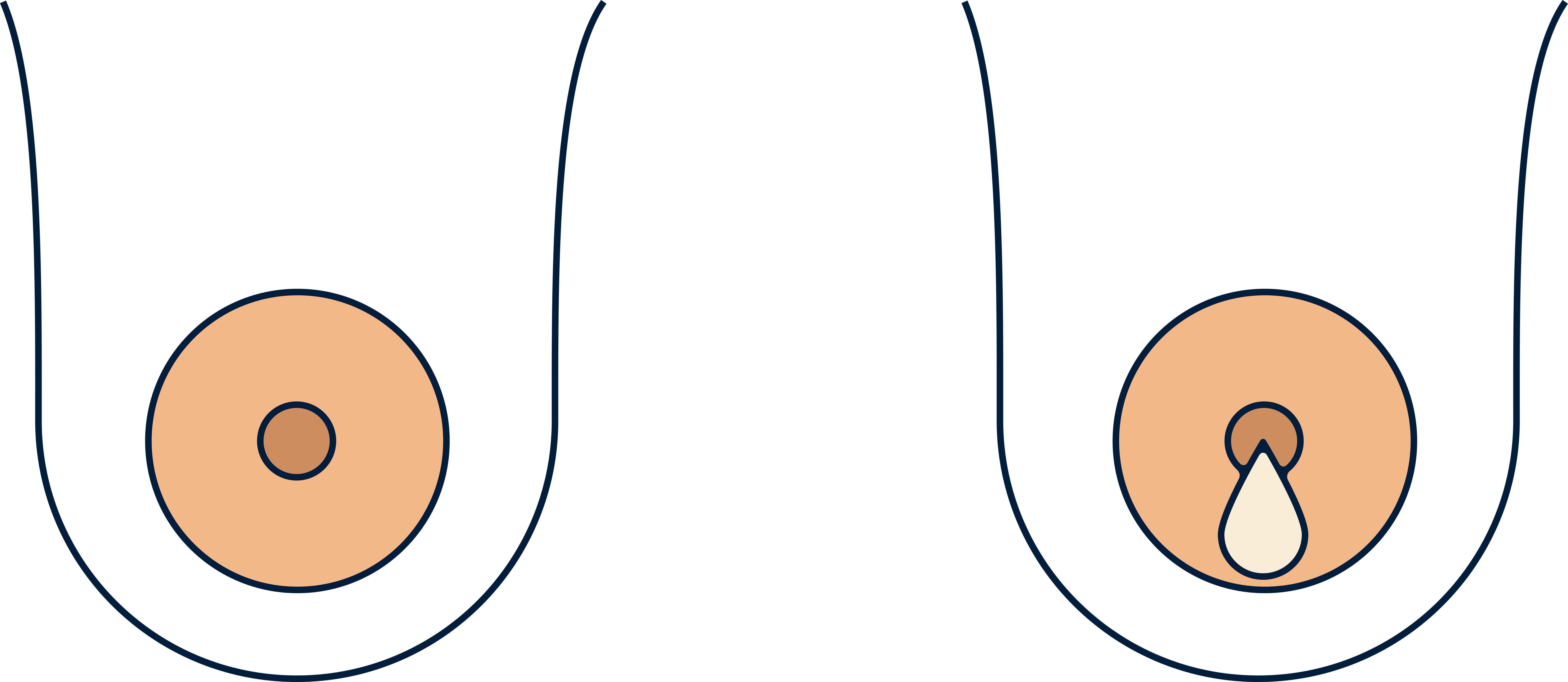
Many different factors not related to pregnancy can cause nipple discharge in women, and they’re usually caused by a hormonal imbalance. However, this type of nipple discharge is usually white or milky, and occur when you squeeze the nipple.
Some types of nipple discharge are more concerning, and can be a symptom of breast cancer. Speak to your GP if you start experiencing nipple discharge that is bloody, only comes from one breast, and comes out spontaneously (without being squeezed).
6. A change in size or shape of your breast
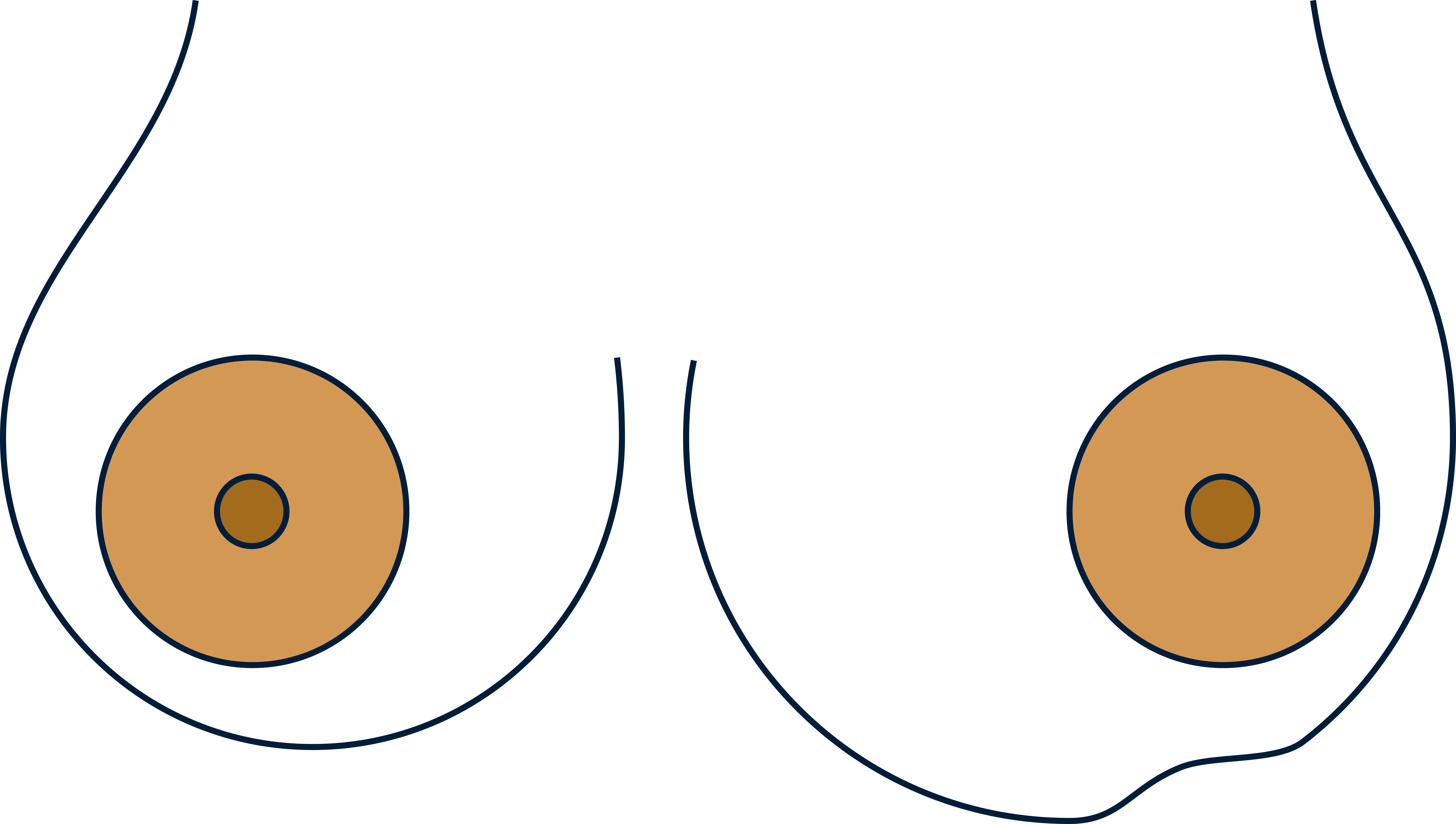
It’s normal for one breast to be slightly bigger than the other, humans are not perfectly symmetrical beings! It’s also normal for boobs to get bigger as you develop (especially when you’re still developing).
However, if you notice a sudden, unusual change in size or shape of your breast then it’s worth getting it checked out.
7. Nipple inversion
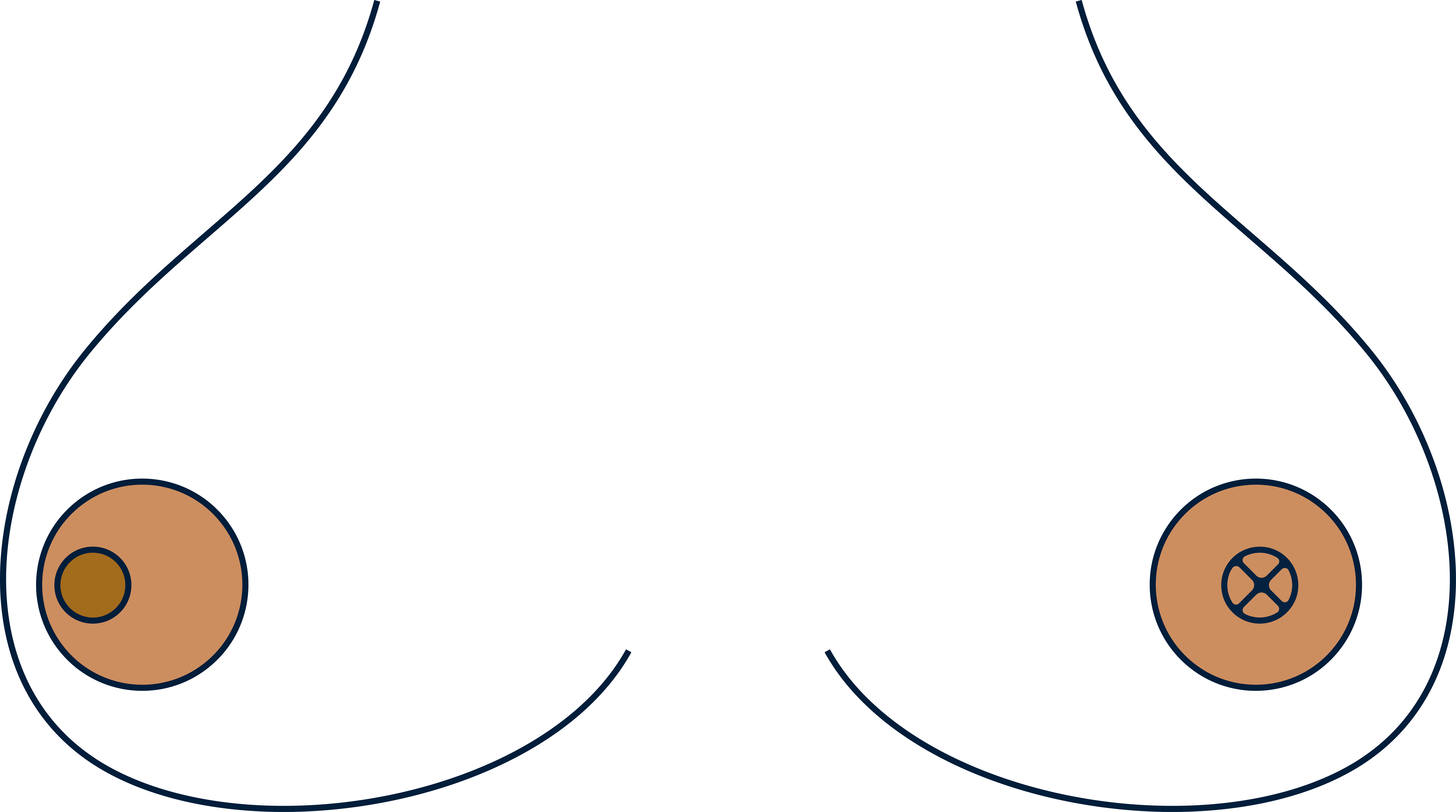
Not everyone has nipples that protrude, and it’s perfectly normal for one or both of your nipples to be flat or inverted.
But if one or both of your nipples changes direction, becomes inverted, or starts to look different then usual, it could be a warning sign, so speak to your doctor about it.
Some nipples that are naturally inverted will stick out as an arousal response to stimulation, or due to changes in the temperature – this is totally normal and nothing to worry about!
8. A rash or crusting around the nipple
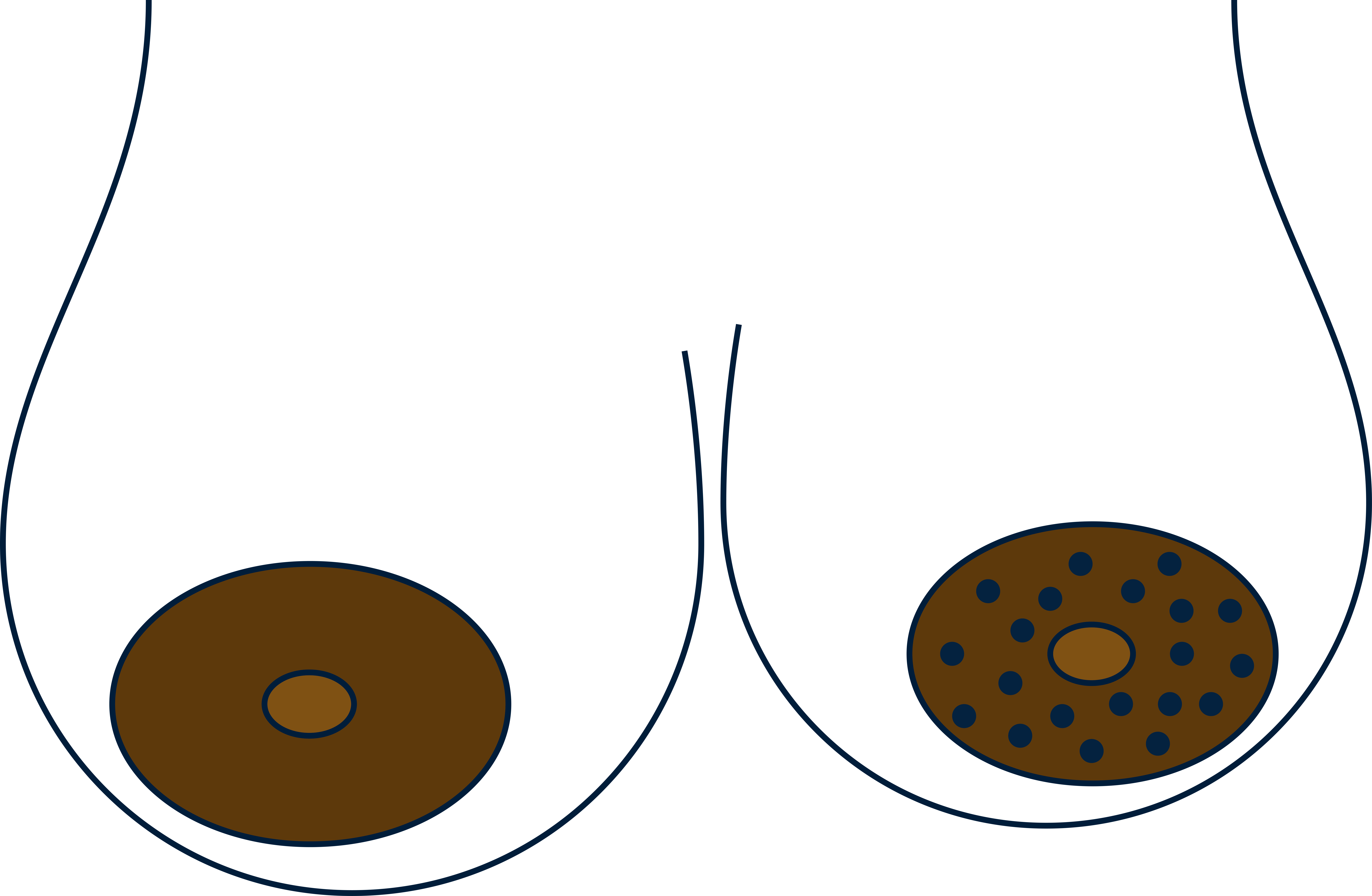
The skin on and around your nipple is not unlike the skin on the rest of your body, so there are many reasons why it may become irritated or change in texture – especially if you suffer from skin conditions like eczema or psoriasis.
But if you notice a rash or crusting of the skin on and around your nipples, have it looked at by a doctor.
When should you do a breast self-exam?
Breast self-exams are one of those things we all know we should be doing, but rarely actually do… a bit like flossing.
There’s been a lot of debate amongst medical experts in the last few years over the efficacy and need of breast self-exams as a cancer screening method, but women often detected breast cancers themselves (in 39% of women aged 50-69, the breast cancer was self-detected).
Breast self-exams only take a few minutes, and you only really need to do them once a month (ideally a few days after your period ends, when your boobs are less likely to be swollen or tender).
There's no right way to check your breasts, just give them a thorough feel (to quote The Notorious B.I.G, “rub your titties”). The key thing is to self-examine regularly enough to know what’s normal for your body, which will make it easier to notice any of the changes listed above. If you think you’ll forget to regularly check your breasts, you can sign up to CoppaFeel’s free monthly text or email reminders.
Getting to know how your breasts look and feel, and how they can change during your menstrual cycle is an important part of staying healthy and potentially catching breast cancer early. Go forth and get acquainted with your boobs!



